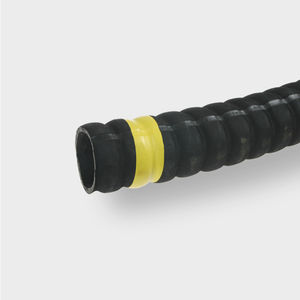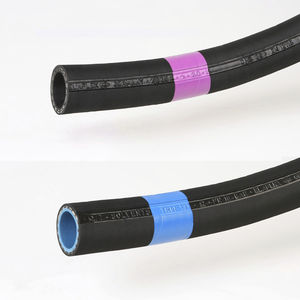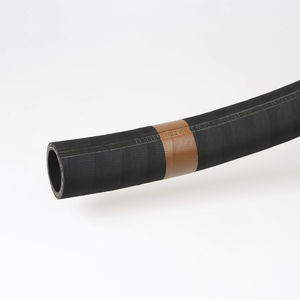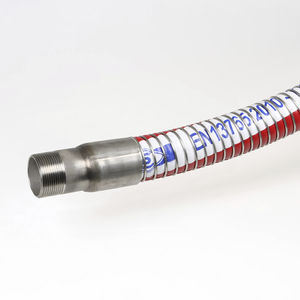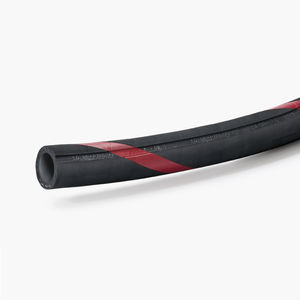
- Hydraulics - Pneumatics
- Pipe, Tube and Fitting
- Crude oil hose
- Elaflex Hiby GmbH & Co. KG
- Company
- Products
- Catalogs
- News & Trends
- Exhibitions
Chemical product hose UTL, UTS, UTD for crude oilEPDMpolyethylene (PE)

Add to favorites
Compare this product
Characteristics
- Use
- for chemical products, for crude oil
- Material
- EPDM, polyethylene (PE)
- Applications
- for chemical applications, transfer, for petrochemical applications, for tanker trucks, dispensing
- Other characteristics
- flexible, abrasion-resistant, weather-resistant, oil-resistant, chemical-resistant, with smooth inner surface, electrically-conductive, UPE inner liner
Description
Application: Pressure hose for discharge in wet and dry hose usage. Also suitable as reel
hose provided the inner pressure reaches min. 0,5 bar to avoid kinking.
Blue-white-blue universal tank hoses for almost all liquid and pasty chemical and petroleum based products and solvents. Temperature range -40° up to +100°C depending on medium.
Steaming out for cleaning and sterilisation permissable up to 130°C for max. 30 minutes (open ends). Meets EN 12115, Ω /T.
Lining : Ultra high molecular polyethylene UPE, white, with conductive OHM spiral stripe,
smooth bore, abrasion resistant, no discoloration, el. conductive
Reinforcement : Thermoplast braids Type UTS additionally with galvanised
steel helix
Cover : EPDM, black, el. conductive, resistant against weather and ageing, flame resistant
Application: Suction and discharge hose for IBC's and barrels, rail tankers, tankers
and fxed installations. The strong steel helix ensures that the hose maintains its shape
during suction and gravity operations.
Lining : Ultra high molecular polyethylene UPE, white, with spiral conductive stripe, smooth
bore, abrasion resistant, no discoloration, el. conductive
Reinforcement : Thermoplast braids, galvanised double steel helix
Cover : EPDM, black, smooth surface with corruations, el. conductive, resistant against weather and ageing, flame resistant
Catalogs
Other Elaflex Hiby GmbH & Co. KG products
Hoses for Petroleum based products, Chemicals, LPG and other Fluids
Related Searches
- ELAFLEX fitting
- ELAFLEX piping
- Hydraulic fitting
- ELAFLEX screw-in fitting
- Metal fitting
- ELAFLEX plastic hose
- Quick coupling
- Stainless steel fitting
- Nickel-plated brass fitting
- ELAFLEX structure hose
- ELAFLEX flexible hose
- Tapped fitting
- ELAFLEX rubber hose
- ELAFLEX abrasion-resistant hose
- Water flexible piping
- Female fitting
- Reinforced hose
- Hose reel
- Spring rewind reel
- Round plug
*Prices are pre-tax. They exclude delivery charges and customs duties and do not include additional charges for installation or activation options. Prices are indicative only and may vary by country, with changes to the cost of raw materials and exchange rates.





